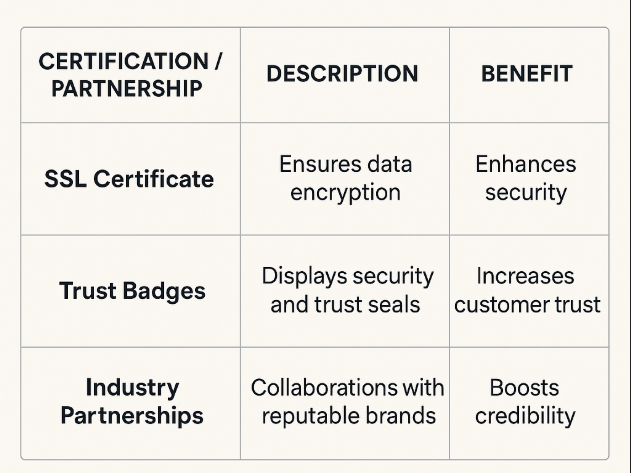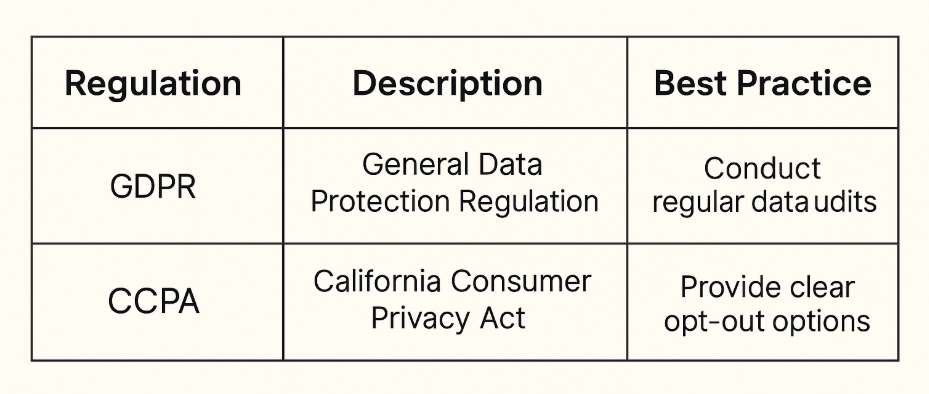Building trust with your audience is crucial for any successful online marketing campaign. In today's digital landscape, trust-building strategies play a vital role in determining the success of your digital marketing efforts.
At the heart of every effective online marketing strategy lies the ability to foster trust with your target audience. When visitors trust your brand, they are more likely to engage with your content, leading to higher click-through rates.
By establishing trust, businesses can create a loyal customer base, driving long-term growth and revenue. In this article, we will explore the various methods and techniques that can be employed to build trust and drive clicks.
Key Takeaways
- Understanding the importance of trust in digital marketing
- Identifying effective trust-building strategies
- Learning how to increase click-through rates through trust
- Discovering the role of trust in creating a loyal customer base
- Exploring techniques to establish and maintain trust with your target audience
The Trust-Click Connection
Trust plays a pivotal role in driving click-through rates, making it a key consideration for marketers. In the digital landscape, establishing trust with the target audience is crucial for the success of any marketing campaign.
Why Trust Matters in Digital Marketing
Trust is the foundation upon which successful digital marketing strategies are built. It influences how users interact with a brand online, affecting their decision to click on advertisements or engage with content. Trust metrics provide valuable insights into how users perceive a brand, helping marketers adjust their strategies accordingly.
How Trust Translates to Higher Click Rates
When users trust a brand, they are more likely to click on its advertisements or links. This is because trust reduces the perceived risk associated with clicking on unknown or unfamiliar links. Psychological factors such as credibility, reliability, and user experience play a significant role in building this trust.


Psychological Factors Behind Trust-Based Clicks
Establishing Brand Credibility Online
Brand credibility is the foundation upon which successful online businesses are built. It encompasses various elements that work together to create a trustworthy and reliable brand image.
Authority Signals That Boost Confidence
Authority signals are crucial in establishing brand credibility. These signals include industry certifications and partnerships that demonstrate a brand's expertise and commitment to quality.

Transparency Practices That Win Customers
Transparency is key to winning customer trust. This includes clear communication about products, services, and policies. Clear privacy policies and transparent pricing are essential practices.
Content Strategies That Build Audience Trust
In the digital landscape, trust is currency, and content strategies are key to earning it. Building a loyal audience requires more than just occasional content drops; it demands a thoughtful approach that prioritizes value, consistency, and emotional connection.
Value-First Content Creation
Creating content that resonates with your audience begins with understanding their needs and pain points. Value-first content offers insights, solutions, or entertainment that enrich their experience.
- Identify audience needs through research and engagement.
- Develop content that addresses these needs comprehensively.
- Use storytelling techniques to make complex information relatable.
Consistency and Quality Standards
Consistency is crucial in maintaining audience trust. Regularly posting high-quality content reinforces your brand's reliability.
- Establish a content calendar to ensure regular posting.
- Invest in editing and fact-checking processes.
- Monitor audience feedback to improve content quality.
Storytelling Techniques That Connect
Storytelling allows brands to connect emotionally with their audience. Sharing narratives that reflect your brand's values or customer successes can foster a deeper bond.
Design Elements That Inspire Confidence
Effective web design is not just about aesthetics; it's about creating trust. A website that is visually appealing and functional can significantly enhance the user experience.
Visual Trust Signals
Visual trust signals such as professional logos, high-quality images, and modern design elements play a crucial role in establishing credibility.
User Experience and Trust Correlation
The user experience is directly correlated with trust. A website that is easy to navigate, loads quickly, and provides clear information helps retain users.
Mobile Optimization for Trust
In today's mobile-first world, mobile optimization is essential. A responsive website ensures a seamless experience across all devices, reinforcing brand trust.

Social Proof: Leveraging Testimonials and Reviews
Testimonials and reviews are powerful tools for building trust with your audience. Potential customers often look to the experiences of others to inform their purchasing decisions.
Implementing Effective Testimonial Strategies
- Showcase a variety of customer experiences.
- Use visuals to enhance testimonials.
- Highlight specific benefits or results.
Case Studies That Demonstrate Results
Case studies offer a detailed look at how a product or service has helped customers achieve their goals. These stories build credibility and demonstrate value.
Showcasing Authentic Customer Experiences
Authenticity is key. Use real names, photos, and stories to make testimonials more relatable and trustworthy.
Building Trust Through Engagement
Building trust requires a strategic approach to audience engagement.
Community Building Techniques
- Create engaging content that encourages discussion.
- Host webinars or live events.
- Use social platforms to foster interaction.
Response Strategies That Strengthen Relationships
- Respond promptly to inquiries.
- Personalize responses to show care.
- Use feedback to improve offerings.
Security and Privacy: Foundational Trust Elements
Security and privacy are foundational to trust. With rising data concerns, businesses must show they take data protection seriously.
Communicating Security Measures Effectively
- Display security badges and trust seals.
- Explain data protection policies clearly.
- Provide regular updates on practices.
Privacy Policies That Reassure Users
Your privacy policy should be clear, concise, and easily accessible.
Compliance and Best Practices

Measuring Trust Metrics and Click Performance
Understanding how trust impacts click performance helps optimize digital strategies.
Key Performance Indicators for Trust
- Customer satisfaction ratings
- Net promoter scores (NPS)
- Trust badges and signals
Analytics Tools and Approaches
Use tools like Google Analytics and social insights to measure trust-related behaviors.
Interpreting Data to Improve Strategy
Analyze performance data to identify trust gaps and inform adjustments to content, design, and messaging.
Conclusion
Building trust is a cornerstone of effective digital marketing. Whether through strong branding, value-driven content, credible design, or authentic engagement, trust shapes user behavior and drives clicks.
By integrating trust-building strategies across all customer touchpoints, businesses can increase click-through rates, boost customer loyalty, and foster long-term growth.
The path to better performance isn’t paved with tricks—it’s built on trust.











